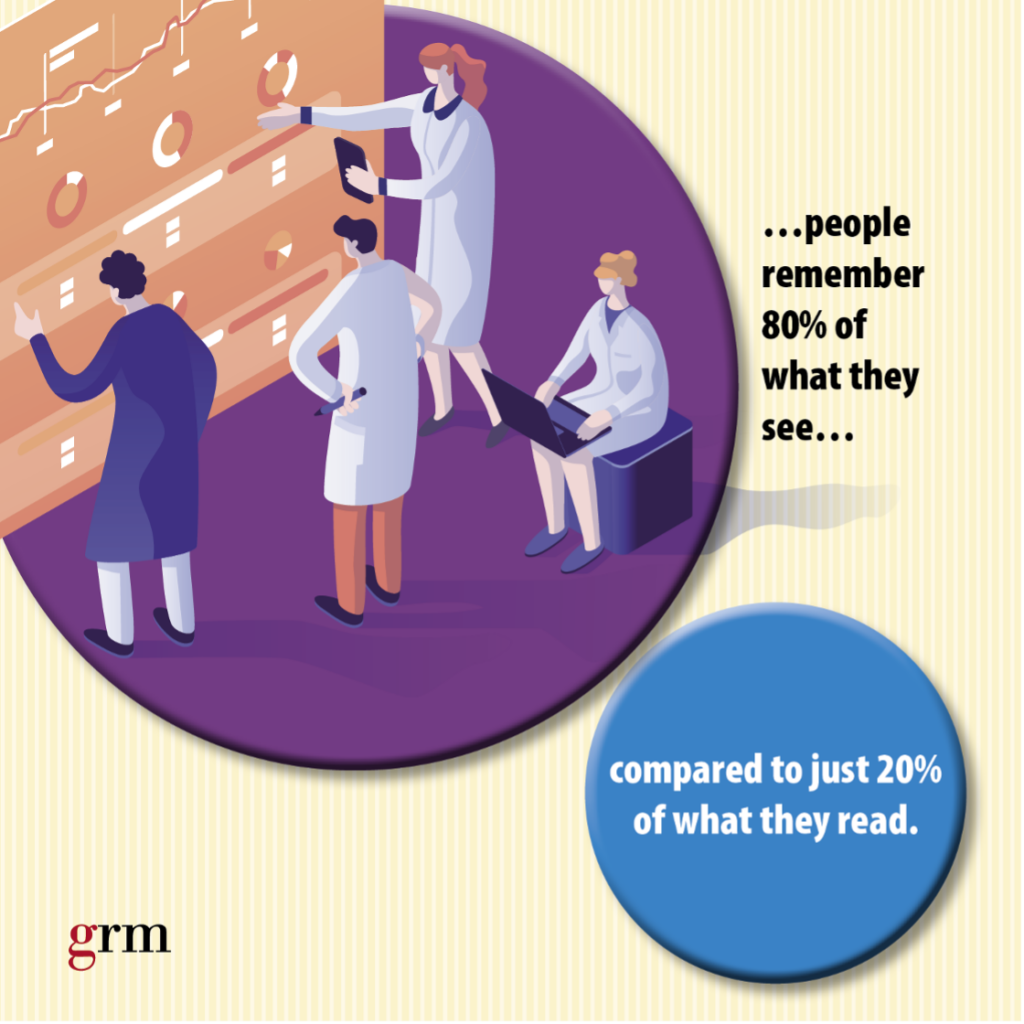In the complex, data-driven world of B2B marketing, building trust with your audience is essential. Traditional methods like white papers, case studies, and technical documents certainly have their place, but they often fall short in engaging and motivating decision-makers. Visual storytelling, however, offers a powerful way not only to communicate ideas more effectively, but also to build trust with your customers—trust that is essential in today’s competitive marketplace.
Why Visual Storytelling Builds Trust
The human brain is wired for visuals. Studies reveal that we process images 60,000 times faster than text, and 90% of the information transmitted to the brain is visual. This rapid processing means that when decision-makers encounter visuals, their brains can interpret and understand the information almost instantly. More importantly, people remember 80% of what they see and do, compared to just 20% of what they read. This high retention rate is key in B2B marketing, where your message must be memorable to stand out.

But beyond the cognitive benefits, visuals play a crucial role in building trust. When you use tools like infographics, videos, and data visualizations, you’re not just making your content more engaging—you’re demonstrating to your audience that you understand their needs and challenges. Customers trust companies that make an effort to simplify complex information, showing that they are attuned to the realities of their audience’s decision-making process.
The Strategic Value of Visuals in B2B
In B2B markets, products and services are often intricate, with long buyer’s journeys that involve multiple stakeholders. Visual storytelling can simplify these complexities, making it easier for all involved to grasp essential concepts. For example, an infographic can distill a complicated process into an easily digestible visual, while a video can bring a case study to life, humanizing your brand and making your message more relatable.
Trust is further built when customers see that your visual content not only simplifies their understanding but also respects their time. In a world where decision-makers are bombarded with information, your ability to present clear, memorable, and actionable insights through visuals demonstrates your commitment to making their lives easier. This fosters a deeper connection, leading to increased engagement and a greater likelihood of conversion.
Motivating Action Through Visual Trust
Visual storytelling doesn’t just make information easier to digest—it has the power to motivate action. Neuroscientific studies suggest that emotional responses to visual stimuli significantly influence decision-making. When you craft visuals that not only inform but also resonate emotionally, you create a compelling narrative that encourages your audience to take the next step, whether that’s contacting a sales representative, requesting a demo, or making a purchase decision.
The trust built through visual storytelling is critical in this process. Your customers are more likely to act when they believe that you understand their needs and have presented solutions in a way that respects their intelligence and their time. This trust differentiates your brand from competitors and positions you as a partner who is genuinely invested in their success.
Making Visual Storytelling Central to Your B2B Strategy
In the crowded B2B landscape, where competitors are constantly vying for the attention of the same decision-makers, the ability to communicate effectively and memorably is crucial. Visual storytelling, backed by the power of neuroscience, offers a unique advantage. By leveraging the brain’s natural preference for visual information, you can create content that not only captures attention, but also builds trust—trust that leads to meaningful engagement and action.
As you plan your next marketing campaign, consider how visual storytelling can enhance your message and strengthen your relationships with customers. By integrating visuals into your strategy, you show your audience that you are the right partner—one that understands their challenges, values their time, and is committed to helping them achieve their goals.





